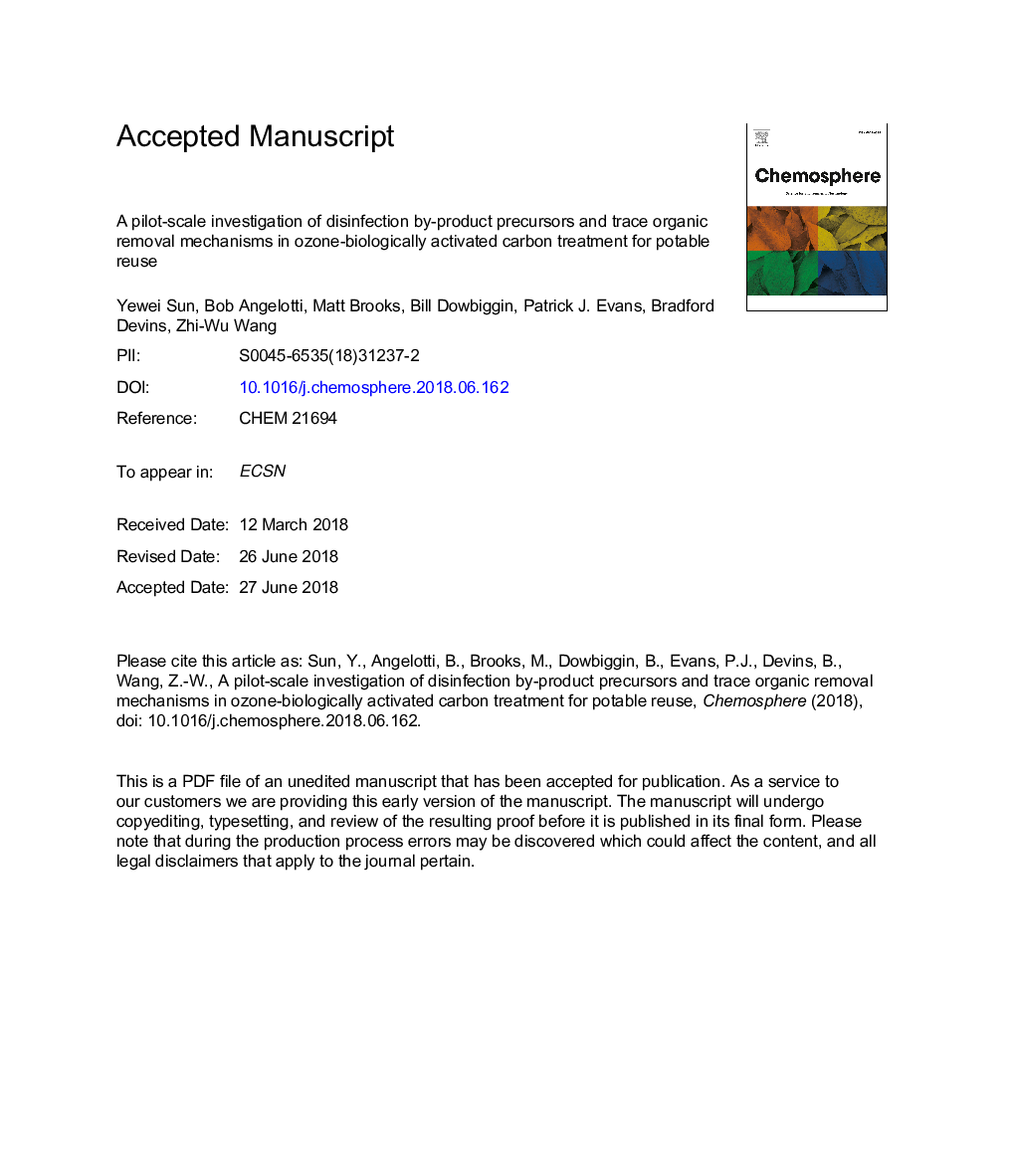| کد مقاله | کد نشریه | سال انتشار | مقاله انگلیسی | نسخه تمام متن |
|---|---|---|---|---|
| 8850512 | 1618761 | 2018 | 47 صفحه PDF | دانلود رایگان |
عنوان انگلیسی مقاله ISI
A pilot-scale investigation of disinfection by-product precursors and trace organic removal mechanisms in ozone-biologically activated carbon treatment for potable reuse
ترجمه فارسی عنوان
تحقیق در مورد مقیاس آزمایشی پیش آگهی های ضد عفونی محصول و مکانیزم های حذف آلی در درمان کربن فعال ازن با زیست فعال برای استفاده مجدد قابل استفاده
دانلود مقاله + سفارش ترجمه
دانلود مقاله ISI انگلیسی
رایگان برای ایرانیان
کلمات کلیدی
موضوعات مرتبط
علوم زیستی و بیوفناوری
علوم محیط زیست
شیمی زیست محیطی
چکیده انگلیسی
Although granular activated carbon (GAC) has been broadly applied in ozone-biologically activated carbon filtration (O3/BAC) systems for potable reuse of municipal wastewater, the mechanisms of various pollutant removal remain largely unknown as the regenerated GAC develops microbial populations resulting in biofiltration but loses significant adsorption capacity as it becomes spent GAC. Therefore, pilot-scale parallel performance comparisons of spent and regenerated GAC, along with a range of pre-oxidant ozone doses, were used to shed light on the mechanisms responsible for the removal of various types of treatment byproduct precursors and trace organic compounds. It was confirmed from this pilot-study that ozone alone can effectively degrade chlorinated trihalomethane (THM) and haloacetic acid (HAA) precursors, chloramine-reactive N-nitrosodimethylamine (NDMA) precursors, and 29 PPCPs. In contrast, biodegradation by microbial population on spent or regenerated GAC can remove NDMA and 22 PPCPs, while the adsorption by regenerated GAC can remove chlorinated THM and HAA precursors, PFAS, flame retardants, and 27 PPCPs. The results of this pilot study are intended to provide those interested in potable reuse with an example of the simultaneous removal capabilities and mechanisms that can be anticipated for treating a complex mixture of organics present in real municipal wastewater effluent.
ناشر
Database: Elsevier - ScienceDirect (ساینس دایرکت)
Journal: Chemosphere - Volume 210, November 2018, Pages 539-549
Journal: Chemosphere - Volume 210, November 2018, Pages 539-549
نویسندگان
Yewei Sun, Bob Angelotti, Matt Brooks, Bill Dowbiggin, Patrick J. Evans, Bradford Devins, Zhi-Wu Wang,
